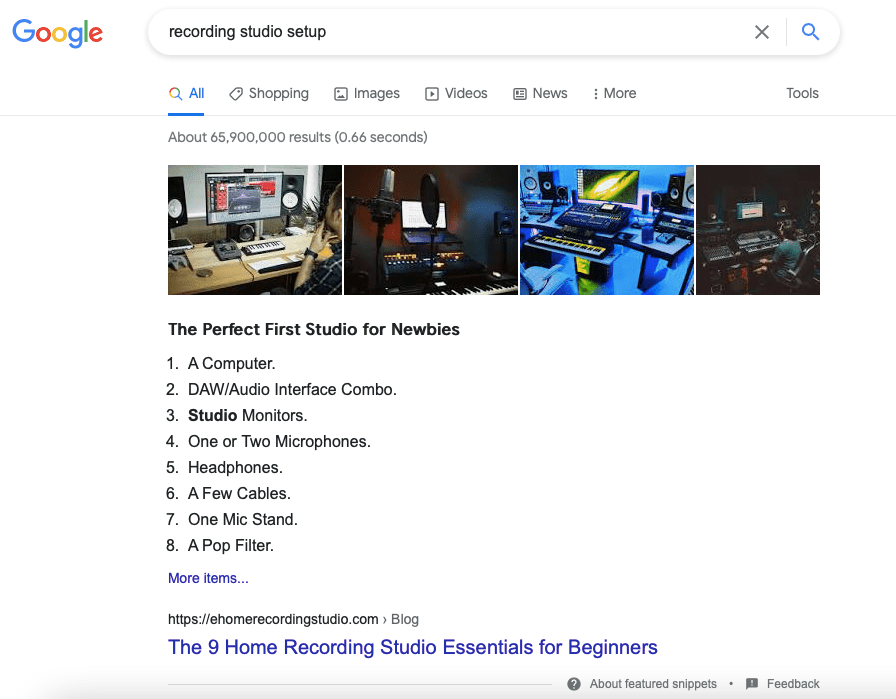

In fact, our website had less than 1500 visits per month when my post achieved the zero position, and the domain authority was well below 20. Content on a website with a low domain authority can’t rank for the zero position.įortunately, you don’t have to be the most popular website in your field with a colossal number of visitors to land in the Featured Snippet. This proves that Google values more than just a high rank to achieve the zero position.ģ. But, it ended up getting featured in the snippet. You need to rank in the first position in order to get placed on a snippet.Īs you might have noticed in the screenshot of the search results at the beginning of this piece, the link to my content was ranked in the number 3 position. In the screenshot shared below, you can clearly see that my article has generated just 5 backlinks from unique domain and yet went on to get a place in Google Featured Snippet.Ģ.

While you shouldn’t completely neglect link building, it doesn’t play as big of a role in this process as many people assume. You need to have a strong link building strategy in place beforehand. Here are some of the most commonly found keywords in queries related to Featured Snippets:īefore going into further detail, there are three common myths that need to be busted when it comes to getting your content in a Featured Snippet:ġ. The most commonly placed features are in relation to queries like: What Does It Take to Get Your Content Displayed in a Featured Snippet?Īhrefs recently conducted a study on snippets and found that 99.58% of content that gets featured already ranks in the top 10 on the Google results. There are three primary types of Featured Snippets:ģ. Over the past couple years, Featured Snippets have seen a momentous growth in popularity. Studies have found that content earning a spot in a Featured Snippet can experience a 516% increase in sessions. The results of these snippets come from third-party sources and give users quick answers to their search queries. While Google had previously developed Knowledge Graph in 2012 and Answer Box in 2013, the difference was that Featured Snippets were entirely sourced from Google’s database. Google officially released Featured Snippets back in 2014. You can use simple headers or HTML lists (ordered or unordered, depending on the context). Tables are pretty rare, but if you see that Google is showing a Featured Snippet on a SERP and it’s in list format, then you may want to organize your content as a list. The current types are paragraph, list, and table. Some data also suggests that Google prefers certain types of snippets for certain types of questions. If the reader is interested, they’ll invest in the rest of the content. Think of the Featured Snippet as a teaser that leads to a summary. This format is also good for web users, who tend to skim. Basically, you give a quick summary and then expand on it. In journalism, this is sometimes called the “Inverted Pyramid” style. Provide a short summary of the answer and then more detail.

You’ll have better luck if you reflect the question Google is answering directly on your page (even in the page title and header). Generally, Google is looking for the best answer, but how they determine that is still fairly simplistic. This matching algorithm already has a number of moving pieces, but the data suggests a couple of guidelines. I asked him to share his own views on this topic. Pete from Moz has done some great research work on Google Featured Snippets. The Featured Snippet box is known as the “zero” position.Įarlier this year, I wrote an article on measuring success of a PR campaign that got placed in the Featured Snippet: So what exactly are featured snippets? On the first page of the Google results, content is ranked in positions 1-10. Featured Snippets refer to selected information displayed in a box at the very top of the organic search. Even more, they have come to expect the search engine to answer it as quickly and clearly as possible.įor this purpose, Google instituted Featured Snippets in the search results.

Google is often the first place people look when they have a question. For businesses looking to establish a brand presence on the web, it can be extremely easy for content to get lost in the digital space without getting noticed. The flow of online information moves at an incredible speed.


 0 kommentar(er)
0 kommentar(er)
